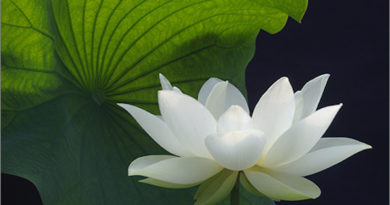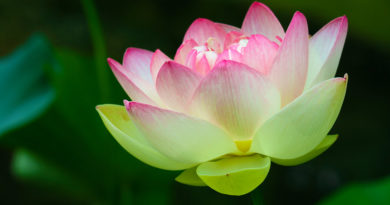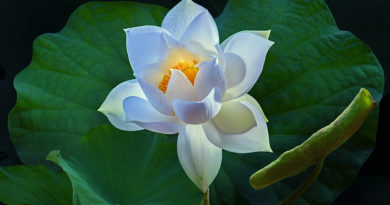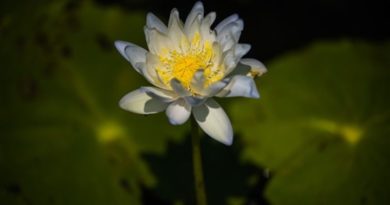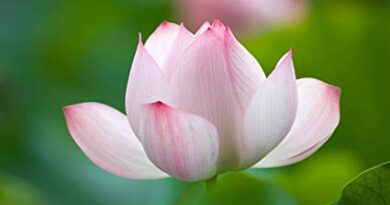DISENCHANTMENT
DISENCHANTMENT
Translated from the Thai by Thanissaro Bhikkhu
We’ll now start meditating, just as we’ve been doing every day. We have to look at this as an important opportunity. Even though our practice hasn’t yet reached the Dhamma to our satisfaction, at the very least it’s a beginning, an important beginning, in gathering the strength of the mind so that our mindfulness, concentration, and discernment will become healthy and mature. We should try to gather these qualities together so that they can reinforce one another in washing away the stains, the defilements, in our minds — for when defilements arise, they don’t lead to peace, purity, or respite for the mind. Just the opposite: they lead to suffering, unrest, and disturbance. They block any discernment that would know or see the Dhamma. There’s no defilement that encourages us to practice the Dhamma, to know or see the Dhamma. They simply get in the way of our practice.
So whatever mental state gets in the way of our practice we should regard as a defilement — for defilements don’t come floating along on their own. They have to depend on the mind. Any mental state that’s sleepy or lazy, any mental state that’s restless, angry, or irritable: these are all defilements. They’re mental states under the influence of defilement, overcome by defilement.
If any of these mental states arise within us, we should be aware of them. When the mind is sleepy, we should get it to keep buddho in mind so that it will wake up and shake off its sleepiness. When the mind is restless and irritable, we should use our discernment to reflect on things to see that these states of mind serve no purpose. Then we should quickly turn back to our concentration practice, planting the mind firmly in our meditation theme, not letting the mind get restless and distracted again.
We focus the mind on being aware of its meditation word, buddho — what’s aware, what’s awake. We keep it in mind as if it were a post planted firmly in the ground. Don’t let the mind wander from the foundation post on which you’ve focused. But whatever your focus, don’t let your focus be tense. You have to keep the mind in a good mood while it’s focused. Do this with an attitude of mindfulness and discernment, not one of delusion, wanting to know this or to see that or to force things to fall in line with your thoughts. If that’s the way you meditate, your mood will grow tense and you won’t be able to meditate for long. In no time at all you’ll start getting irritable.
So if you want to meditate for a long time, you have to be neutral, with equanimity as your foundation. If you want knowledge, focus firmly on what you’re already aware of. Keep your mind firmly in place. Find an approach that will help you stay focused without slipping away. For example, make an effort to keep your mind firmly intent and apply your powers of observation and evaluation to the basis of your buddho. All of these things have to be brought together at the same spot, along with whatever thinking you need to do so that mindfulness won’t lapse, letting unskillful outside issues come barging in, or leaving an opening for internal preoccupations to arise in the heart, or letting yourself get disturbed by thoughts of the past — things you knew or saw or said or did earlier today, or many days, many months, many years ago. You have to focus exclusively on the present.
If you’ve taken buddho as your meditation theme, keep coming back to it over and over again. Buddho stands for awareness. If you can maintain awareness without lapse, this will make an important difference. If you’ve taken the breath as your theme, you have to be aware each time the breath comes in and out. You can’t let yourself wander off. You have to take nothing but the breath as the focal point for mindfulness. The same principles hold in either case. You do the same things, the only difference is the theme of your awareness.
Why does the Buddha teach us to focus on the breath? Because we don’t have to look for it, don’t have to guess about it, don’t have to think it into being. It’s a present phenomenon. There’s no such thing as a past breath or a future breath. There’s simply the breath coming in and out in the present. That’s why it’s appropriate for exercising our mindfulness, for gathering our mindfulness and awareness in a single place, for firmly establishing concentration.
So you can focus on either theme — whichever one you’ve already meditated on and found that mindfulness can quickly get established without lapsing and can quickly produce a sense of stillness and peace. Set that theme up as your foundation. When you’re starting out, focus on keeping that theme in mind.
Once the mind has had enough stillness, if you simply want it to become more still, the mind will get into a state where it isn’t doing any work because it’s not distracted in any way. If this happens, you have to start contemplating. In the foundations of mindfulness we’re taught to contemplate the various aspects of the body in and of themselves. We don’t have to contemplate anything else. If you want to contemplate from the angle of inconstancy, it’s here in this body. If you want to contemplate from the angle of stress, it’s here in this body. You can contemplate it from any angle at all. If you want to contemplate from the angle of eliminating passion and craving, you can look at things that are dirty and disgusting — and you find that they fill the body. This is something that requires you to use your own intelligence. Whatever angle you use, you have to look into things so that they get more subtle and refined. Contemplate them again and again until you see things clearly in a way that gives rise to nibbida, or disenchantment, so that you aren’t deluded into latching onto things and giving them meanings the way you used to.
Turn over a new mind, turning your views into new views. You no longer want your old mistaken views. Turning from your old views, give rise to right views. Turning from your old ways of thinking, give rise to right resolves — to see the body as repulsive and unattractive. This is nekkhama-sankappa, the resolve for renunciation, the resolve to escape from sensual passion. We don’t go thinking in other directions, or go roaming off in other directions. We try to go in the direction of escaping from the view that the body is beautiful. What the eye sees of the body is just the outer skin. It’s never seen the filthy things inside. Even though it may have seen them from time to time, as when someone dies in an accident or when a patient is opened for surgery, there’s something in the mind that keeps us from taking it to heart and giving rise to discernment. There’s something that keeps us from contemplating things down to a level more subtle than what the eye sees. We see these things and then pass right over them. We don’t get to a level profound enough to give rise to disenchantment.
So contemplate the body. If the mind has developed a strong enough foundation, it shouldn’t stay stuck just at the level of stillness. But if you haven’t yet reached that level of stillness, you can’t skip over it. You first have to make the mind still, because a firm foundation of stillness is absolutely essential. If you try to contemplate before the mind has grown still, you’ll give rise to knowledge that lasts only as long as you’re in meditation. When you leave meditation and the mind is no longer firm, your new understandings will disappear. Your old understandings will come back, just as if you had never meditated. Whatever way you’ve been deluded in the past, that’s how you’ll be deluded again. Whatever views you’ve had before won’t change into anything else. Whatever ways you’ve thought, you’ll end up deluded just as before as long as your new ways of thinking aren’t based on a foundation of stillness.
This is why stillness is so essential. We have to get the mind to gain strength from stillness and then let it contemplate the body in and of itself in terms of its 32 parts. You can choose any one of the parts, focusing on it until it’s clear. Or you can focus on the parts in sets of five. When you reach the liquid parts, you can focus on them in sets of six, for there are 12 of them in all. You can contemplate them back and forth — if your mindfulness hasn’t yet been exercised to the point were it’s firm, contemplate these things back and forth just as a preceptor teaches a new ordinand: kesa, loma, nakha, danta, taco (hair of the head, hair of the body, nails, teeth, skin), and the turning them around to taco, danta, nakha, loma, kesa. Then you can go onto the next set of five — mansam, nharu, atthi, atthimiñjam, vakkam (muscle, tendons, bones, bone marrow, spleen). This is called contemplating them in sets of five.
This is how we start out exercising mindfulness. If, while you’re practicing mindfulness in this way, a visual image of any of these five parts appears, catch hold of it and contemplate it so that it grows deeper and more refined. Contemplate it until you can divide the body into its parts, seeing that each part is just like this. Get so that you know the body inside and out, that you realize that other living beings are just like this, too. If you’re looking to see what’s unclean, you’ll find it here. If you’re looking to see what’s not-self, you’ll find it here. Turn these things over in your mind and question yourself as to whether they’re constant. What kind of pleasure is there in these things? Is it worthwhile or not? Focus on these issues often, look at them often until you’re adept, and the mind will finally be willing to accept the truth, changing from its old wrong ways of seeing things, and seeing them instead in line with the Dhamma as taught by the Buddha.
When your views change often in this way, the mind will experience a new kind of stillness and peace. It will turn away from the fevers of the fires of passion, aversion, and delusion; and turn into mindfulness, concentration, and discernment instead. Its knowledge and views will become clear. It will no longer waver. It will become brave and no longer afraid in the way it used to be — for it has come to know the truth: that nothing gets pained aside from the aggregates; nothing dies aside from the elements. The mind gets firmly planted. It can meditate with a snug sense of confidence, with no fear of pain or illness or anything at all. You can separate things out all the way down. Even if death were to come at that point, you’d be content, for even though death doesn’t come, these things have separated out of their own accord. You’ve contemplated them and seen them for what they are, each and every one.
So I ask that we all have firm principles in our contemplation. Be genuine in doing it — don’t just go through the motions — for all these things are genuine. If we don’t meditate, defilements will inhabit our thoughts, deceiving us so that we don’t see things as they genuinely are. If we depend just on our eyes, they can fool us. The eye can see only the outside of things. It sees skin, and the skin can be made up to deceives us. It sees hair of the head, and hair can be made up to deceives us. It sees hair of the body — things like eyebrows and beards, which can be dressed to deceive us. It sees fingernails and toenails, which can be made up to deceive us. It sees teeth, which can be treated to deceive us, so that we make all sorts of assumptions about them. The eye has no discernment. It lets us get deceived — but it isn’t what does the deceiving. The mind is what deceives itself. Once it deceives itself, it makes all sorts of assumptions about itself and falls for itself. When it makes itself suffer in this way, there’s no help for it. This is the genuine truth. Know clearly that the mind is what deceives itself. When it doesn’t have a refuge, it can deceive itself all the time.
So we have to develop qualities that the mind can hold to and take refuge in, so that defilements won’t be able to keep on deceiving it. Look so that you can see more deeply through things. Try to analyze things to see what’s not genuine, what’s dressed and disguised. Then as soon as you look at anything, you’ll see what’s fake and made up. You’ll know: “The real thing doesn’t have this color, this smell, this shape.” You’ll see how things are always changing. This is called having the qualities of the Dhamma as your refuge, as something to hold to as you look, hear, smell, taste, and make contact with things. You’ll have the qualities that know and see things as they actually are — so they won’t be able to deceive you. You won’t be able to deceive yourself, for you’d be ashamed to. The heart grows disenchanted with itself, with its old ways — and why would it want to deceive itself any more? It’s seen that it doesn’t gain any benefit from that kind of behavior.
Instead, you’ll see that it really benefits from its new views. They make the mind still. Clear. Set free with a sense of well-being. All its heavy old burdens fall away. It has no greed for gaining a lot of things, for there’s no more indulging. It doesn’t use anything to indulge itself. All it needs is the four necessities to keep life going — that’s enough. It doesn’t have to invest in anything. It finds its happiness and well-being in the stillness that comes from meditating. The things around it that it used to fall for and build up into ignorance without realizing it: when it focuses on really knowing these things, its delusions disband. Ignorance disappears. The mind gains knowledge from these things in line with what they actually are. It wises up and doesn’t fall for these things as it used to, doesn’t misunderstand them as it used to.
And that’s the end of its problems.



